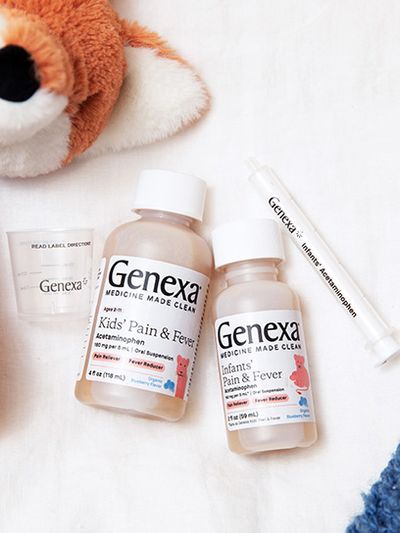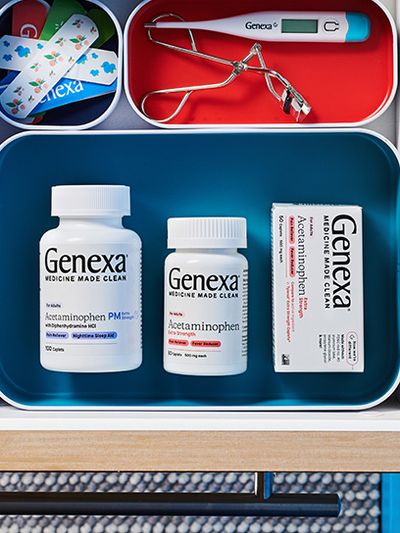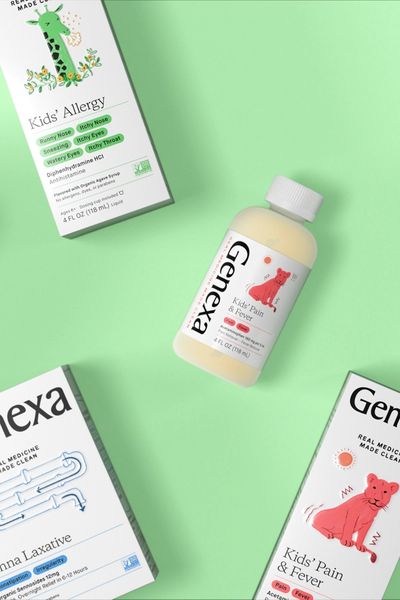What To Do When Your Baby Has A Rash
The Guide To Dealing With Baby Rash
Written by Adam Partridge, PA-C - Genexa Healthcare Provider & Partner on July 28, 2021
If your baby has a rash, they may be itchy, fussy, and uncomfortable, and you will probably want to find relief for them quickly. While not all baby rashes cause itching or other symptoms, many of them do, so knowing the proper ways to treat rashes at home can help you get your baby feeling better in no time.
The proper treatment method depends on the type of rash your baby is dealing with, and it can be hard to figure out what type of rash it is without building a better understanding of common rashes that babies come down with. That said, this is your complete guide to getting rid of your baby’s rash.
Most Common Baby Rashes and How To Treat Them
There are plenty of common rashes that babies may experience, most of which are nothing too serious. Many rashes do not require treatment at all, but some rashes can cause fevers or itchiness, in which case treatment might be in order to keep your little one feeling comfortable.
Below are the most common baby rashes and ways to treat them.
Rashes That Do Not Cause Itching or a Fever
Milia
Milia are small white spots caused by blocked oil glands, and they appear on the face and most often on the nose. Milia are not itchy or contagious, and they often go away on their own within a few weeks. If your baby has milia, you do not need to worry.
Erythema Toxicum
Erythema toxicum is a blotchy skin reaction that may appear on your baby’s face between two days and two weeks after birth. The rash starts on the face and slowly spreads to the body and limbs, and it will appear as flat, red patches or small bumps. Like milia, this rash will not cause any harm to your baby and it is not contagious. Erythema toxicum generally clears up after a few days or a week, so no treatment is necessary.
In the first few months of life, your baby may develop baby acne. The acne will most likely appear on their cheeks and nose, but it usually clears up on its own. It can take a few weeks, a few months, or even a year for baby acne to go away, but it is harmless. You can help reduce baby acne with normal washing for your little one with some plain old water and mild baby soap is all it takes.
Erythema Multiforme
Erythema multiforme is a rash that entails red spots on the hands and feet that have the potential to spread across both sides of your baby’s body over the course of a day or so. This type of rash is triggered by some form of infection, illness, or medication. Though this rash does not typically cause itchiness, it can become blistered or raised. That said, erythema multiforme does go away on its own in three to six weeks in most cases.
Rashes That Can Cause Itchiness
Heat Rash
Heat rash, also known as prickly heat, can happen if your baby becomes hot in a humid environment. It appears as tiny red bumps or blisters, and the rash can be extremely itchy. Fortunately, heat rash usually goes away in just a couple of days, and it can be treated by avoiding humidity and keeping your baby in a cooler environment.
Hives
Hives can happen at any time and on any part of your baby’s body, and this rash entails raised, red, itchy bumps. Hives will generally clear up in a few days with no treatment, but your doctor can recommend over-the-counter or prescription medication for hives if needed. Just make sure to consult your pediatrician before trying out any new medicines, and definitely do so if your child is under the age of 4 years.
Rashes That Can Cause a Fever
Slapped Cheek Disease (Fifth Disease)
Slapped cheek disease is a viral infection that most commonly impacts pre-school and school-age children, and it appears as a bright red rash on both cheeks that spreads to other parts of the body in a lace-like pattern. Typically, slapped cheek disease is relatively mild and may even clear up in a few days without any kind of treatment.
Hand, Foot, and Mouth Disease
Hand, foot, and mouth disease is a highly contagious virus that typically causes a rash on the bottoms of the feet and the palms of your baby’s hands. This virus is very common in childcare and kindergarten settings, and the rash and other symptoms associated with this illness generally last from 7-10 days. Aside from a rash, your baby may also have a fever and blisters on their hands, feet, and mouth.
Most often, hand, foot, and mouth disease does not require treatment, but your doctor can recommend creams and other treatments to ease any discomfort caused by the rash or blisters.
More Serious Baby Rashes, and When To Call a Doctor
Most baby rashes are harmless, but some rashes are a sign of something more serious, and being able to recognize the signs can help you get your baby medical attention faster.
Meningitis Rash
Meningitis rash looks like tiny red or purple pin prick spots that turn into blotches, and if you suspect your child has meningitis rash, there is an easy trick you can use to help you make this determination. Take a glass and hold the side of it against your baby’s skin where the rash is, pressing firmly against the skin. If the spots stay red under the pressure rather than fading to white, it is possible that your baby has meningitis rash and you should seek medical attention immediately. If the spots fade under the pressure, you should keep checking to see if there is any change. Meningitis rash is a sign that your baby has meningitis, and thus, it needs to be taken very seriously. Aside from the rash, your baby may also have a fever, pale or blotchy skin, or may be fretful and reluctant to eat.
Chickenpox
The rash from chickenpox will appear as red, itchy spots that turn into blisters filled with fluid, and within 5 to 6 days the blisters will likely dry up and become scabs. Aside from this rash, your baby may also have a fever or may feel generally unwell. Your baby is contagious until all of the blisters dry up, so keep them away from other children and vulnerable people while they recover. Calamine lotion can help ease uncomfortable blisters, and you should consult your doctor if your baby becomes very ill.
With any type of rash, it is important to pay close attention to your baby’s symptoms. Symptoms that worsen or that do not respond to the appropriate treatment are a sign that you need to contact your pediatrician for further guidance and a diagnosis if necessary.
The Bottom Line
When your baby ends up with a rash, it is natural to be concerned, but most baby rashes are really nothing to worry about. In fact, many common rashes will actually clear up with no treatment in a few days or a few weeks and will not cause your little one any harm.
That said, some rashes are a sign of a more serious illness or disease, and if you ever have trouble figuring out what is causing your baby’s rash, you should play it safe and speak with your pediatrician. Your pediatrician will also be able to recommend creams or any other products that will help ease any discomfort your baby is experiencing, and they can help answer your questions or concerns.
Most rashes will not be a big deal, but it never hurts to play it safe. Hopefully your little one feels better soon!





